Below are a set of notes for photographers and travelers alike.

My itinerary is in blue.
It rains a lot in Alaska. Have rain gear for you and your equipment. I wish I had gotten one of those think tank rain protection sleeves.
Make sure you always have a cleaning device (e.g. microfiber cloth, lens pen, lens wipes) on you to remove rain drops from your lens. I had a number of shots ruined by the flare due to water on my front lens.
The best weather for animal photography is cloudy weather because the light is very diffuse and you get beautiful uniform lighting with nicely bright silhouettes for the bears.In case of drizzle or rain, however, your photo will be full of speckles which you might want to blur in Photoshop.
I was in Southcentral Alaska in the end of June-early July. The weather was warmer than I expected and I've needed my heavy sweater only for the boat rides when staying outside in the wind. Make sure you bring gloves though.
Because of weather, there are often plane delays. Make sure you plan enough buffer time. For example, our flight from Anchorage to Kodiak got canceled and we flew the next day to find out that... our floatplane from Kodiak to Katmai could not go because of bad weather as well. Overall we lost one day of shooting.
One means of transportation that is not to be missed is the train from Anchorage to Seward. This is the most gorgeous ride ever, and the space between the cars is all open which allows you to take pictures with no window between you and the beautiful landscape.

Alaska is full of sea mammals and sea birds, and day cruises are a great way to see them. This means a lot of photography on a shaky ground. Image stabilization won't help you too much because the boat motions have large amplitude. Just don't go below 1/1000, especially with the big telephotos. A lot of our bear and eagle pictures in Geographic Harbor were taken from a small skiff that was sometimes moving a lot.

Small boats are a lot better for photography because you're not as high and it's less crowded.
I struggled a lot with auto-exposure because of the reflections in the water. With a Canon, you might want to systematically over-expose (+1) or go manual.
I brought my SLR on a number of Kayak outings and it has survived! I tried three options to keep it dry: Pelican case, dry bag, and faith.
The Pelican case is super safe and makes it easy to carry two lenses. The main problem is to access the gear. Since you typically attach the case with bungees (see below), you need to remove them before accessing your equipment.
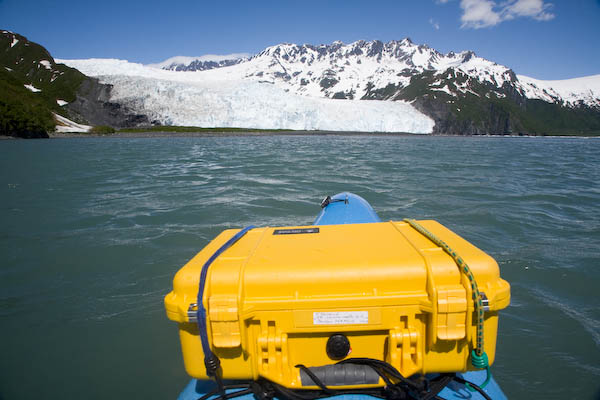
I found the dry bag to be the most convenient because you can stick it under the elastic cords in front of you and access your camera easily. However, it's not convenient to stick an extra lens.
The first day, I actually kept my camera around my neck most of the time. The water was extremely quiet and I was in a double with the guide, so there was little risk of diving.
In Kodiak Island, I decided to try a single kayak and got a little carried away. A big breaking wave surprised me and I went under. Fortunately, my 5D & 100-400 were in a dry bag and survived the operation. Moral of the story: when not shooting, put the camera back in the dry bag.
Shooting from the kayak was fun but I can't say I had wonderful shots that I would have been sorry I missed. I mostly shot the landscape with kayaks in the background for context.
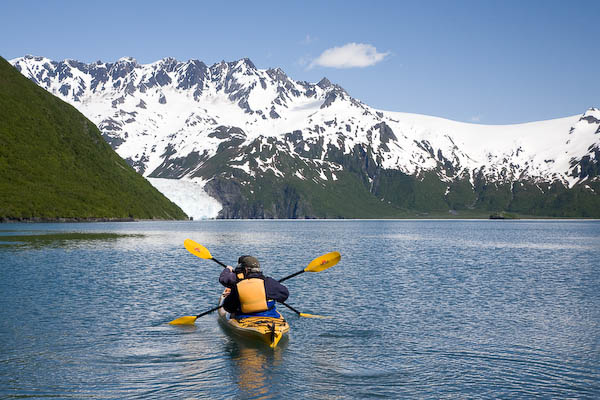
We did see a black bear swimming, but I had the hardest time focusing. On the kayak, you are really close to the water, which is essentially a big receding plane and the bear was not sticking out by much. With the motion of the kayak, it was very difficult to focus on the bear precisely.
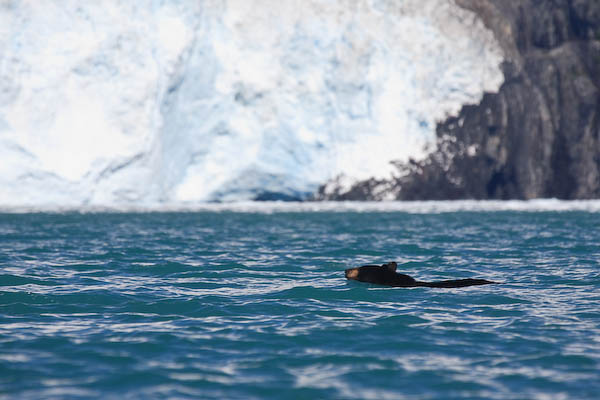
I went with the following companies, which were all great:
Liquid Adventures in Seward (my favorite)
Sunny Cove Kayak in Seward
Orcas Unlimited in Kodiak
True North Kayak Adventure in Homer
One of the most memorable moments of my trip was a two-hour flight I did with Scenic Mountain Air in Seward, I chartered the plane because I wanted to take photos without the plexiglass in the way. It was a tiny plane with just me and the pilot. He blocked the window open with a bungee cord
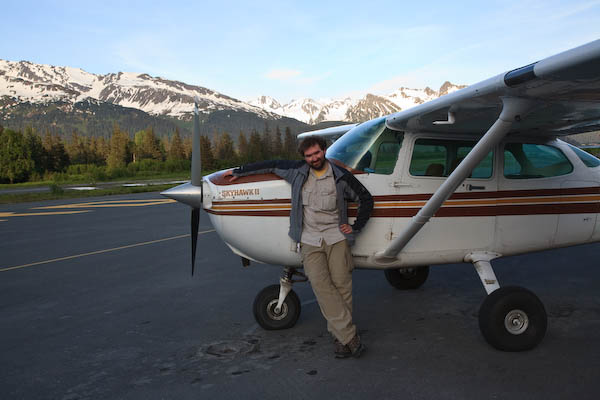
The pilot, Jim Gray, was very flexible. I made a reservation for a given day, but he then suggested we wait a day or two because the weather would be better. Indeed, the day I went was the most beautiful day of the week and I had great light. I had insisted to go in the evening and we took off around 8pm (but remember that sunset is around 11pm that time of year). Jim had questioned whether I should not go earlier and in a sense he was right. Some of the Fjords had strong cast shadows because of the low angle of the sun.
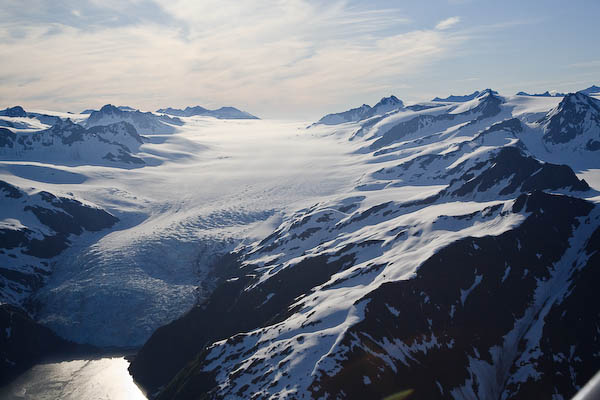
Canon 5D at 45mm, 1/4000s f/5.6 ISO 800
On the other hand, when we went over the ice field, the light was just gorgeous.
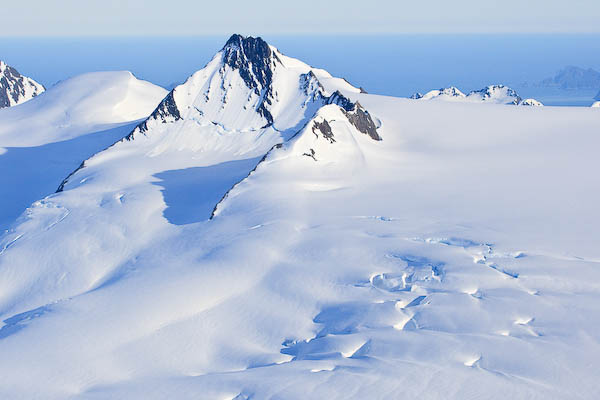
Canon 1D Mark III at 100mm, 1/2500s, f/10 ISO 1250
Similar to boat photography, don't count too much on image stabilization. The plane is moving fast and there is a lot of vibration. Just don't go below 1/1000s. For example, I love the photo below but when viewed at 100% it is not as sharp as it should.
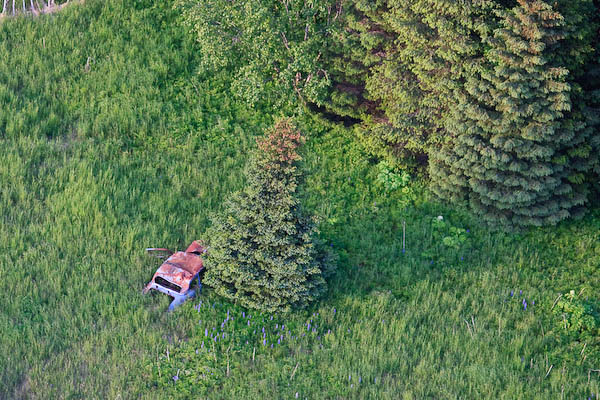
Canon 1D Mark II at 200mm, 1/500s f/5 ISO 1600
I had read somewhere that for eaerial photography, autofocus is more a nuisance and that you can block your lens on infinity and forget about it. It might be true if you're high enough, but with those small planes you can get pretty close to the landscape and you want to focus precisely. I have ruined a few shots until I realized that Autofocus was my friend. And I have not had any problem focusing.
I was so excited to have the window open that I started by sticking my lens out by teh window. Bad idea. You can imagine how much wind you get when moving above 150mph and I am lucky I did not smash my camera.
I had taken a lot of lenses because I did not know what I was doing, but I mostly used the 24-105 on a 5D and the 100-400. For wide angle shots, the window frame and the wing structure do get in the way. Fortunetaly, I could ask Jim to tile the plane in any way to align my free viewing cone with what I was interested in. Similarly, if I liked a viewpoint, we could back to try another shot. For example, we made three loops around the streams below because I wanted to make sure I had a decent shot.
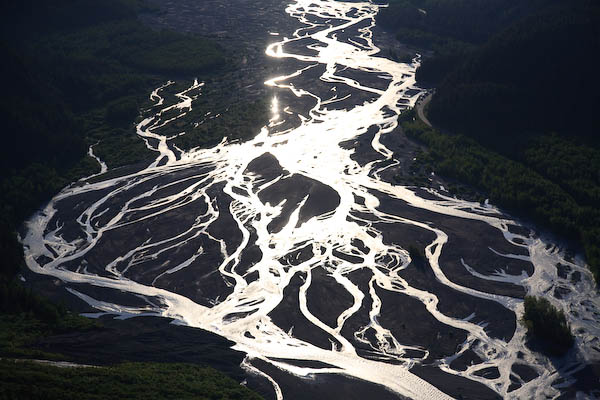
Canon 5D at 73mm, 1/5000s at f/5, ISO 800
We also did another flightseeing tour with a group of friends, but that time we could not open the windows and had to deal with plexiglass.

The window usually adds a veil on the image. You can reduce it by raising the black level of your image or playing with a tone curve. For the image below, I just set the black in Lightroom to 15 insteadof the default 5. Photos of snowy areas usually turn out OK, but dark and mid-tones suffer quite a bit.
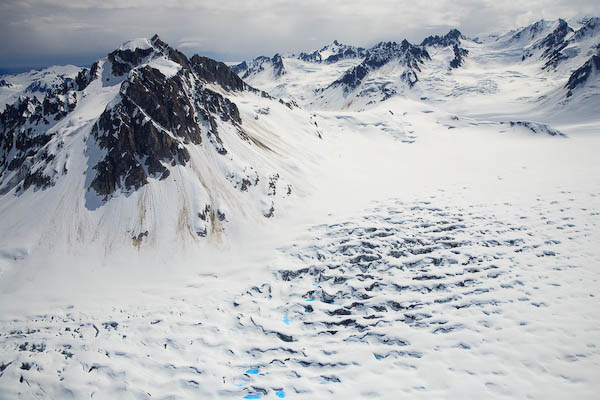
For snow, make sure you get your exposure right. You usually need to adjust with exposure compensation with +1. I messed that up many times.
There is a good video introduction to aerial photography by John Bell. See the aerial photography primer at photo.net and Galen Rowell's Aerial Wisdom.
Summer in Alaska is a paradise for night photography. Sunset lasts forever, and then you get three hours of dusk. Make sure you bring your tripod!
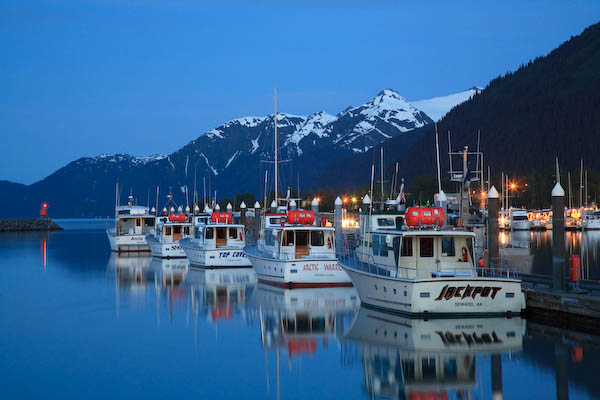
I had never seen a wild bear in my life, but in Alaska I saw dozens of them, some as close as 30 feet! We stayed a small week (see transportation section!) on the coast of Katmai, living in a boat. We would typically do two outings a day, one in the morning and one in the afternoon. Around geographic harbor we mostly shot from the skiff, which added a level of challenge because of the boat motion.
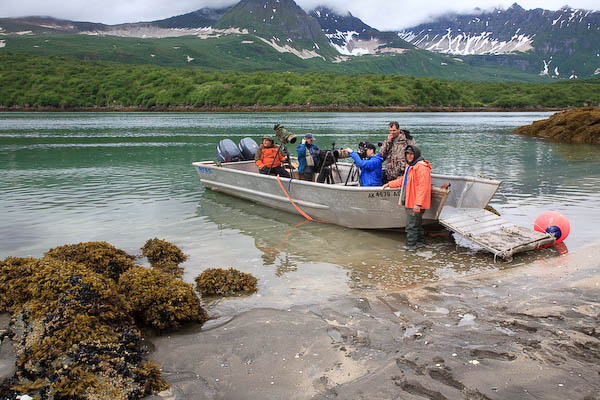
There the bears where mostly claming and it was cool to see how they deal with opening the sea shell.
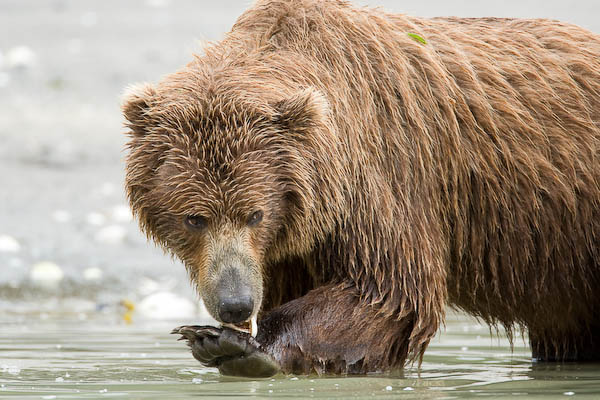
The best weather for bear photography is cloudy. I usually had to overexpose the bears by +2/3.
The background was often great, with nice shades of yellow and green.
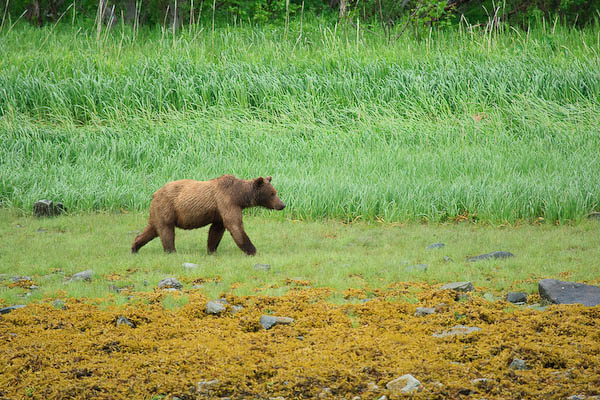
In Halo Bay, we would go on land and walk among the bears. This was quite an experience, and at one point in time, we would often have a dozen bears around us. Unfortuantely the salmon had not arrived yet and the bears were only grazing.
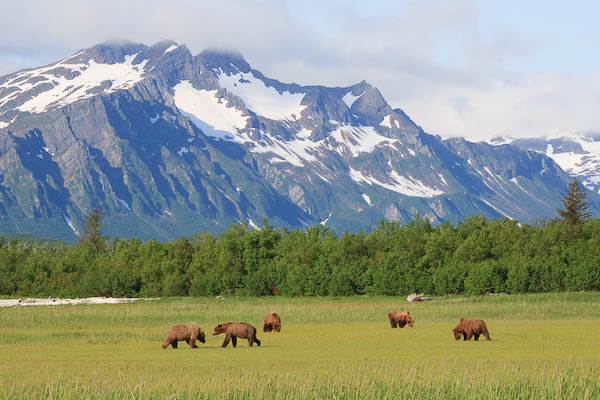
Some of the bears got very close. That bear stopped and raised his head at the perfect momnt when he was aligned with the mountain. Note that the focal length is only 190mm. In these situation, yoru best protection is in numbers. Stay tight as a group and the bear will feel outnumbered.
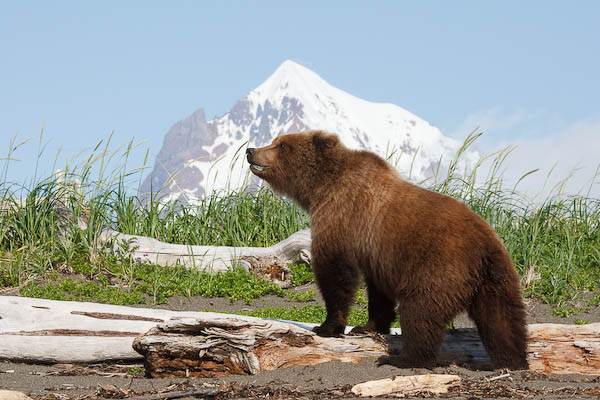
Canon 1D Mark III at 190mm. 1/640s, f/16, ISO 800.
There was one time where a bear looked quite mad at us. It appears that this bear was threatening a mother and her cubs and was quite unhappy to be disturbed. He was foaming and gnashing his teeth at us. Fortunetaly we were a big enough group and he decided to leave it at that and go away.
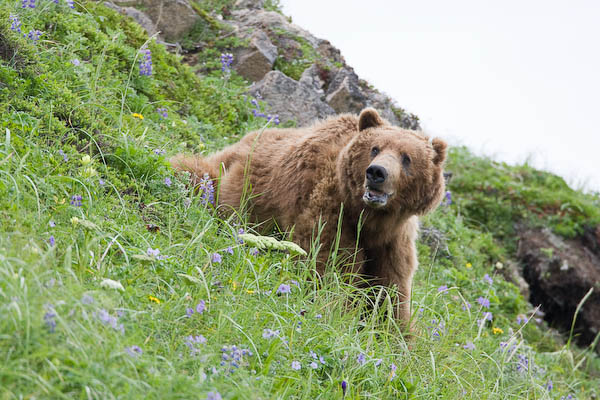
But most of the time I need my 500mm with the 1.4, and in some cases I even put the 2x.
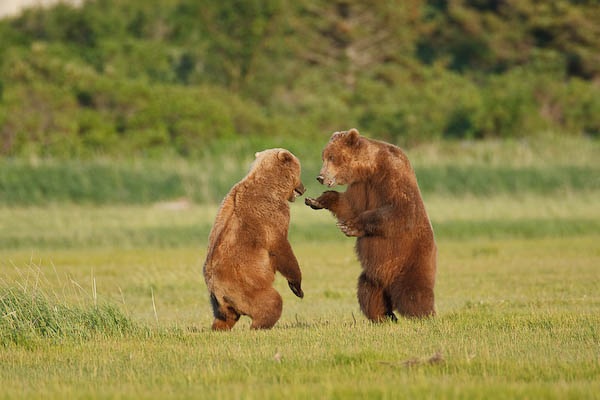
Canon 1D Mark III with 500mm f/4 and a 2x teleconverter. 1/640s f/8, ISO 800
We saw a number of bears sparring and it was quite exciting. On this trip, I used the high-speed mode of the Mark III a lot more than usual but I constantly had to keep an eye on the buffer. 25 frames are quickly gone and when the bears are wrestling, you never knwo if you won't run out of buffer space right when something even more exciting happens.
The color variation among brown bears is astonishing Some of them are close to white!
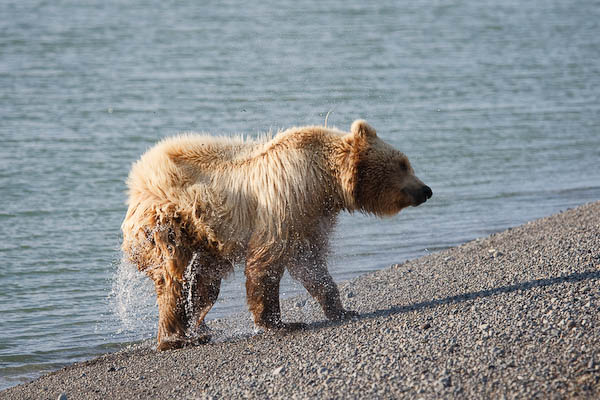
Bears are great swimmers and often go from island to island.
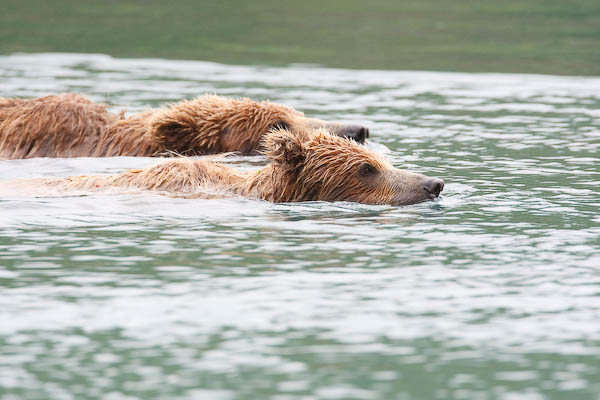
A great thing with large animals such as bears is that they take many years to mature. This means that no matter what time of the year you go, you will see young ones, which are usually playful.
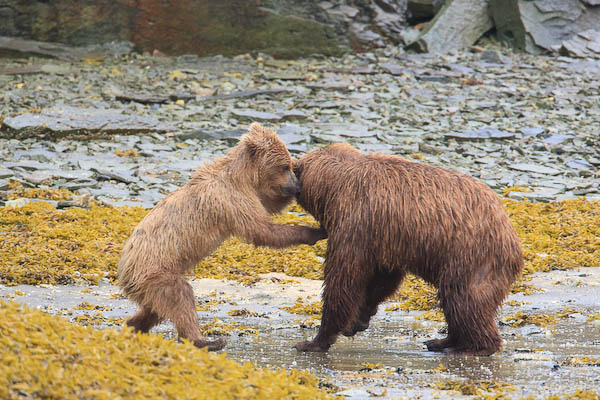
I saw a few black bears. First on a hike around Anchorage, but he left right away and I did not have time to take a picture. Then I saw a fewaround Kenai Fjord, including one who was swimming (see Kayak section). Black bears are tough to expose right. I wish I had my flash for fill in and for creating a refecletion in the eye.
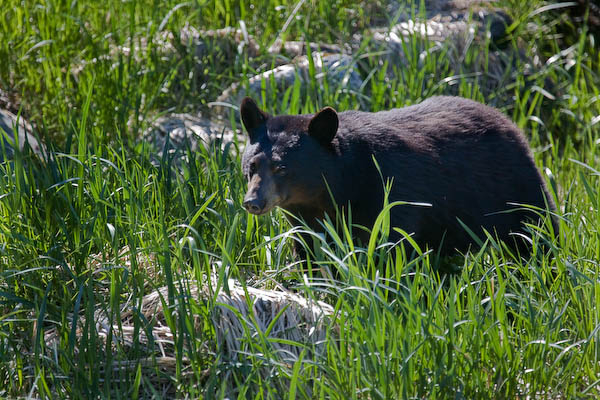
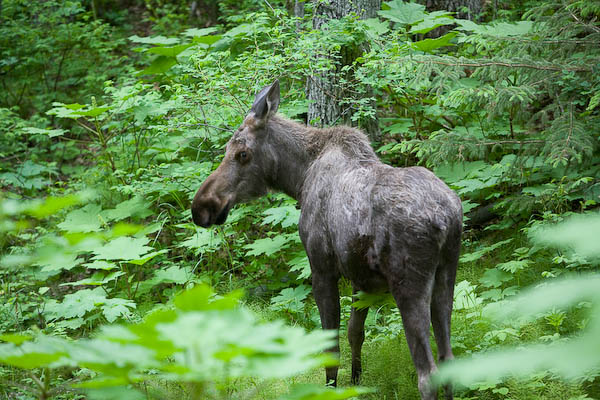
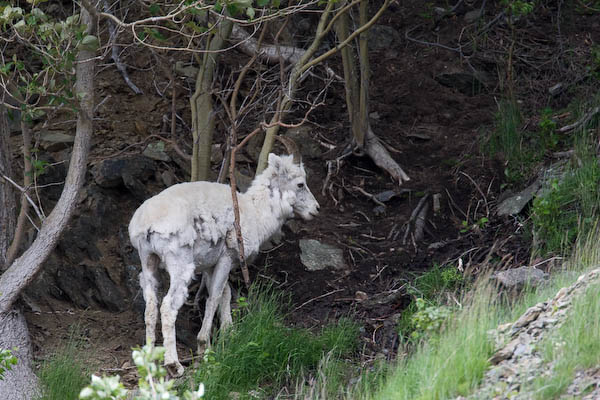
We saw two foxes at Halo Bay (Katmai). I was told that you often see them playing on the beach, but we did not have such luck.
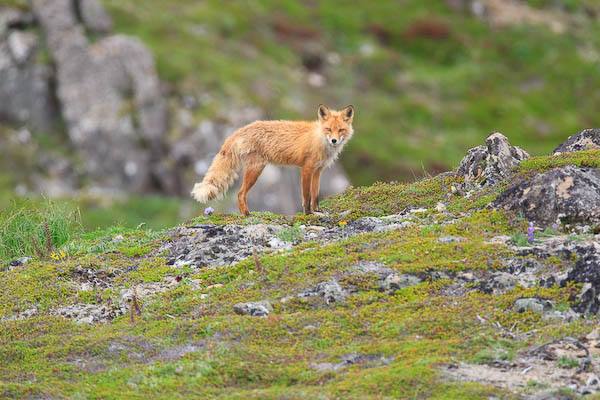
Sea otters are just the cutest, They float on their back and look at you with curiosity. The mothers carry their young on their belly.
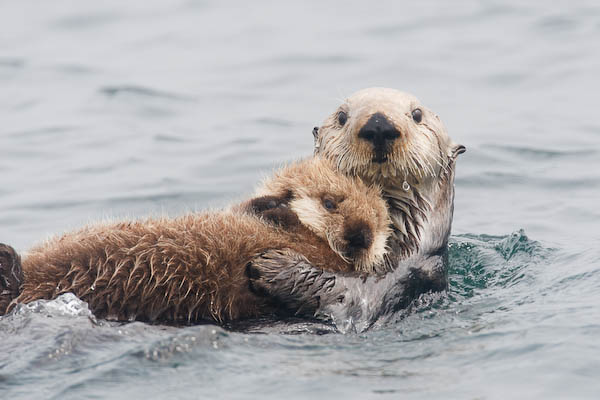
Most of them are very skittish but around harbors they are more habituated and won't hide s much.
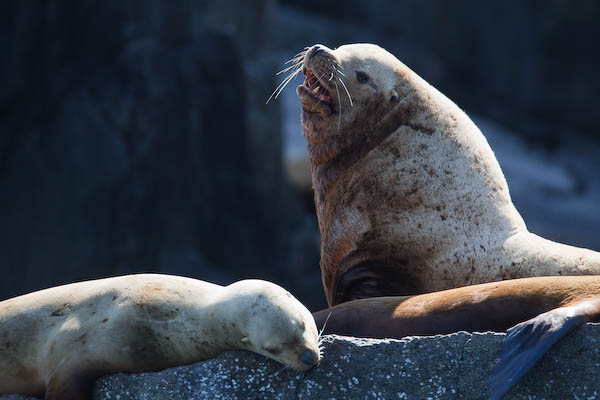
Seals are skittish and hard to photograph.
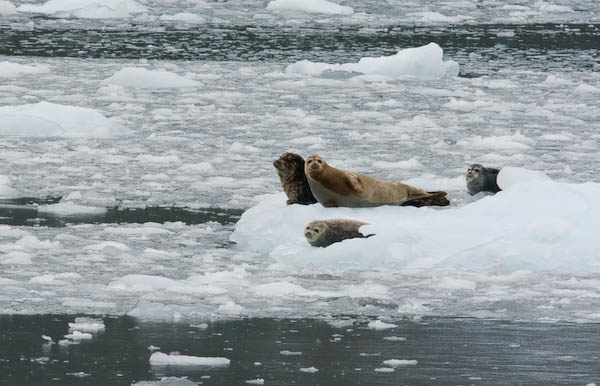
I saw quite a few orcas from the boats around Seward.
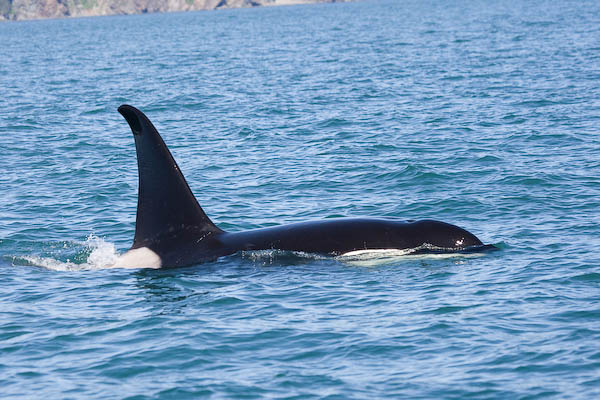
More amazing, one of them started breaching in a perfect sea world re-enactment. It was very close to the boat and the picture below is shot at 400mm.
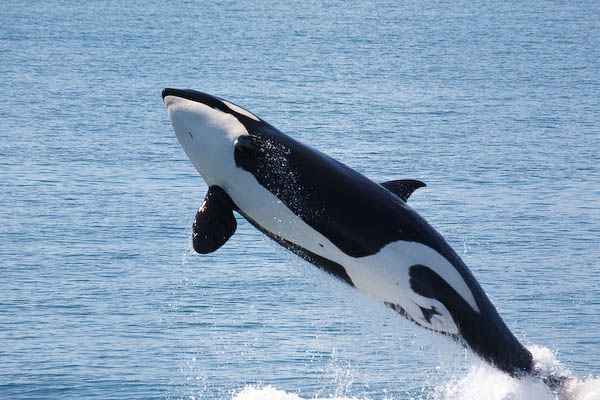
Alaskan waters are full of humpacks. Most of the time you only see their back, sometimes they show their tail before diving.
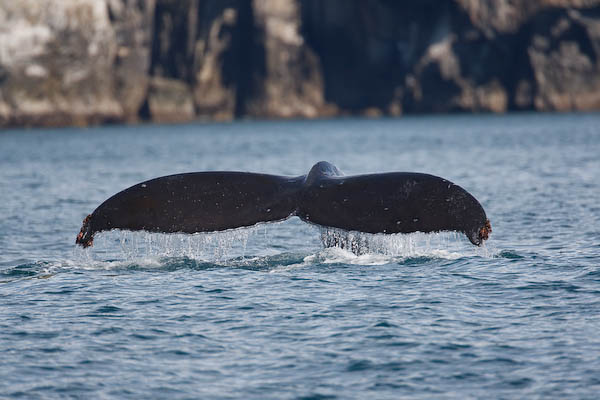
And if you are lucky you will see a head.
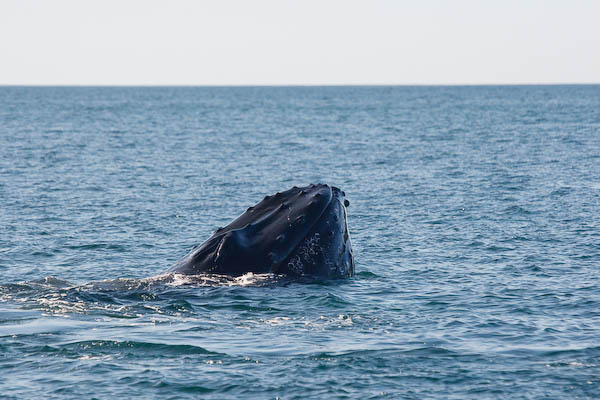
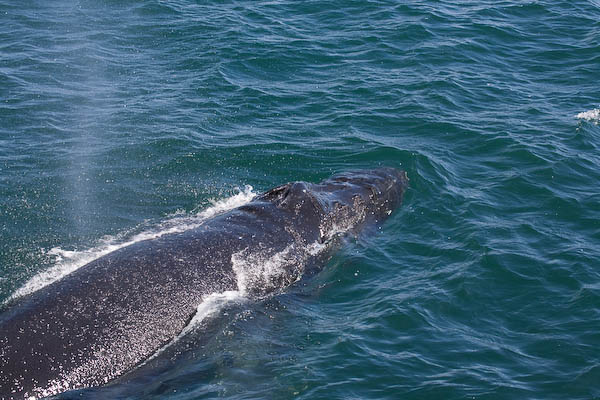
Porpoises are playful and often swim in front of the boat. They go really really fast. They are frustrating to photograph because of their speed and because they never really have much of their body outside the water. Most of the time, all you get is a picture of a big splash.
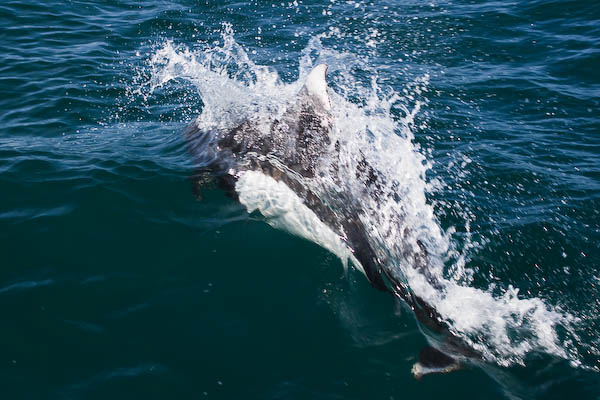
Bald eagles abound in Alask. the challenge is not to over-expose their white plumage. I first tried to use exposure compensation with -2/3, but for birds in flight, I finally switched to manual because the meter was too unreliable. The eagle below was mad at us because we were too close to its nest.
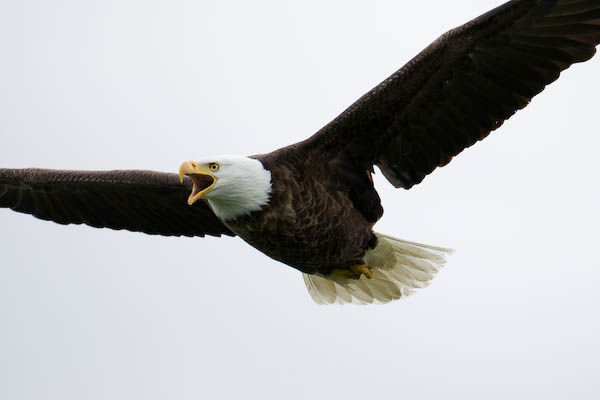
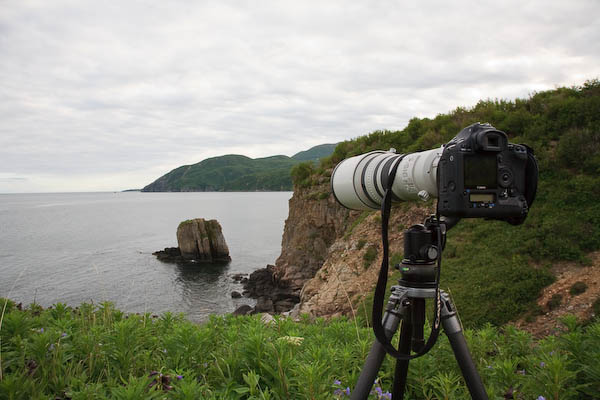
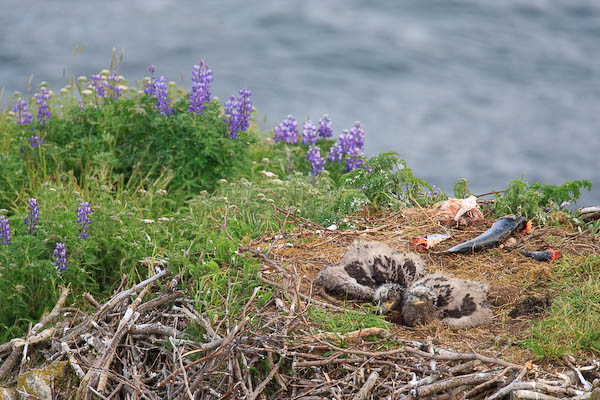
Puffins are super cute. They are smaller than I expected and you see two main kinds in Alaska. The tufted puffin has crazy hair.
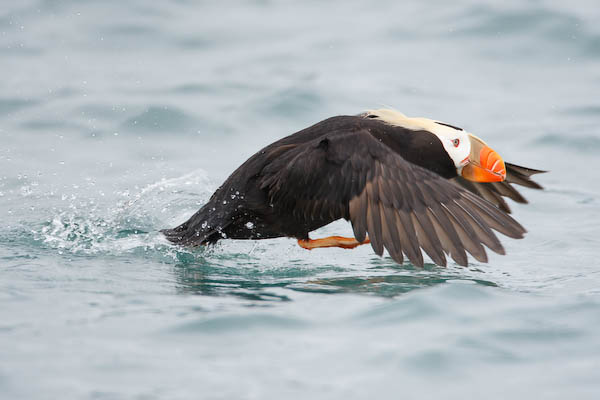
The horned puffin has funny black "horns" leaving its eyes and a yellow patch near the beak.
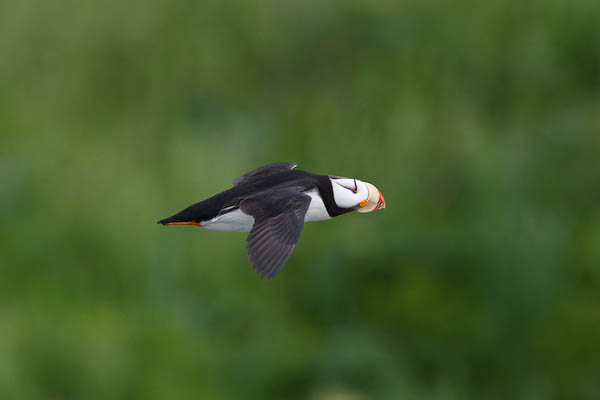
Puffins are not great at flying and they are fun when they litterally run on water to take off. They are, however, amazing divers. I recommend the Seward Sea Life Center because you can see them in an aquarium and they are very elegant when they fly underwater.
Like eagles, puffins have a white area that is easy to overexpose.
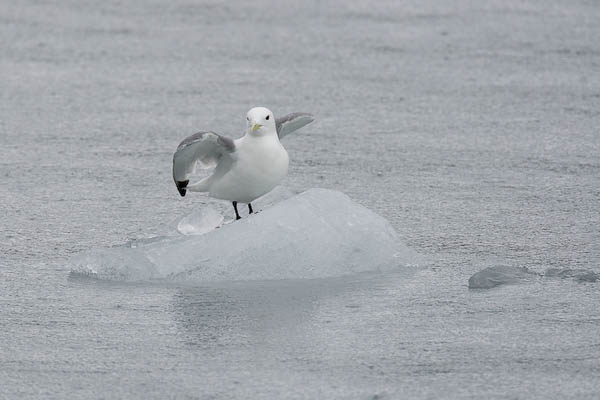
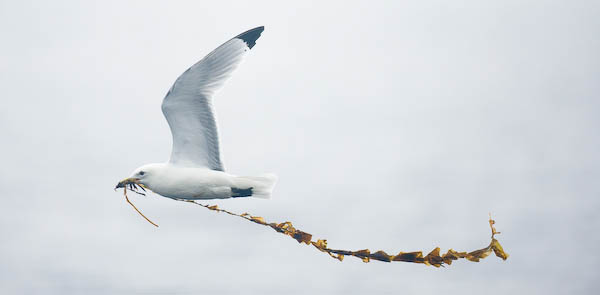
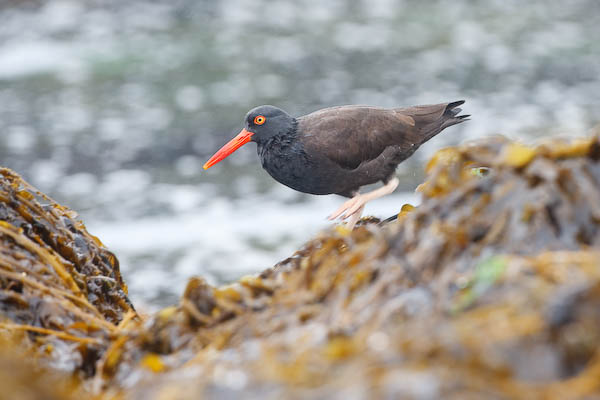
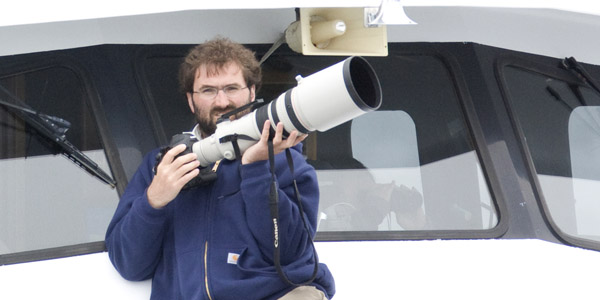
Photo by Dave Landers. The lens is the 500mm f/4. It looks scarier than it is: the last third is just a hood, no glass.
As usual on a wildlife trip, my most used lenses were the 500mm f/4.0 with a 1.4 teleconver, the 100-400m, and the 24-105. When I could, I had each of these on its own body to avoid switching lenses. The kinesis belt system made it easy to carry three cameras with big lenses (see below).
Two of the members of the bear expedition used a 600mm f/4. There were times where I wished I had more reach (I had to use the 2x). I had the 500 on a 1D Mark III, which means only a 1.3 conversion factor. Some people had their 500 on a 1.5 (Nikon) or 1.6 (Canon) body. I must say I was happy it was on the Mark III because of the bigger buffer and high speed.
I had brought my 300mm f/2.8 but I almost did not use it.
I long hesitated between the 100-400 and the 70-200 and ended up bringing both. I mostly used the 100-400, but I sometimes wished I had better optics.
I had the 16-35 but mostly relied on the 24-105, stitching panoramas when needed.
I used the 50mm f/1.4 more than I thought. This is partially because one evening I went out without my tripod and realized that the light was amazing for photos around the harbor. Shooting hand-held with available lighting at 1:30pm is not something you can do everyday.
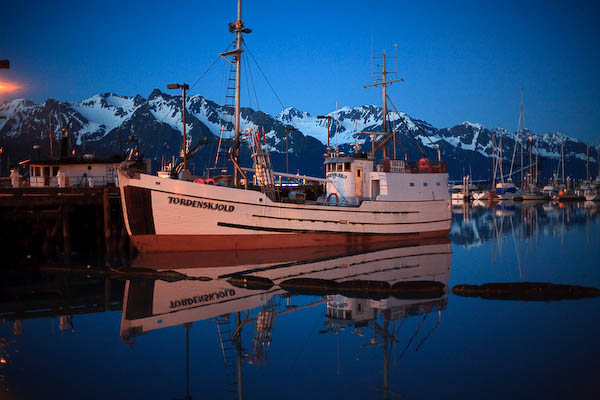
Canon 5D and 50mm, 1/25s at f/1.4, ISO 1600
I extensively used my kinesis belt system. It makes you look very goofy with all those pouches and holsters hanging off your belt, but it provides very convenient access to all the gear and is easy to carry because it rests on your hips, not your back. The system is modular and I used a slightly different set of pouches for my hikes where I was using only two cameras and for the more hardcore wildlife photography where I had three bodies. I had the 5D and its 24-105 in its closed holster, well protected from the rain, and a 1D Mark III with the 100-400 in an open holster.
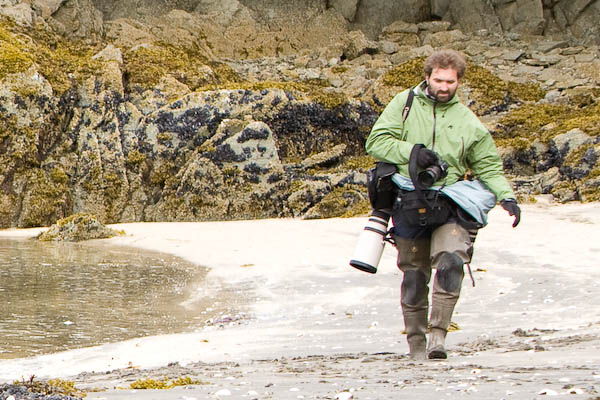
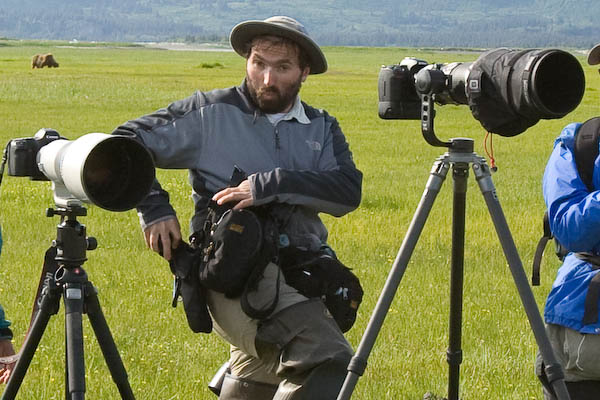
I was glad I had purchased kinesis' rain cover, not only for protection against the rain but also against waves and spray in the skiff.
Most of the time, I did not use a backpack, just the kinesis belt system.
I had my big lowepro, though, and I used it for some of the hikes.
I had my big Gitzo tripod (13 series) and boy, was I glad I had it! Light is amazing at night and you want the tripod for long exposure. Furthermore, you spend a fair amount of time waiting for the bearsto do something interesting. The tripod provides you with rest and extra stability.
Robert O'Toole advocates the Mongoose gimbal head because it is light. I used a Wimberley sidekick because I like the ability to use my main ballhead for regular (non-super-telephoto) photography as well. Again, light was amazing at night (especially in Seward) and I put the tripod to good use.
Alaska is a rainy place. Furthermore, transport on the skiff can involve a lot of spray. I wish I had one of those rain protection gears such as the think tank ones. I had brought a trash bag but it's not as flexible.
Have lots of cleaning stuff. Have it with you all the time. One day some rain landed on my 500's front lens and ruined the contrast of my shots. I was so frustrated I had left wy wipes in the boat.
With all the water everywhere, a polarizer is a very useful filter.
Bring UV filters to protect lens in boats. I usually don't have a UV on my lenses, but Alaska is a good place to change this habit. With the skiff and the boats, you get a lot of salty spray.
I had brought a waterproof Olympus 1030 camera which was really convenient to have with me all the time. Image quality is, however, only so so.
Anchorage is probably the uggliest city I have ever seen. The only nice thing it has is the Tony Knowles trail, which is a nice bike ride. We did it with Hans, Tim and Diego.
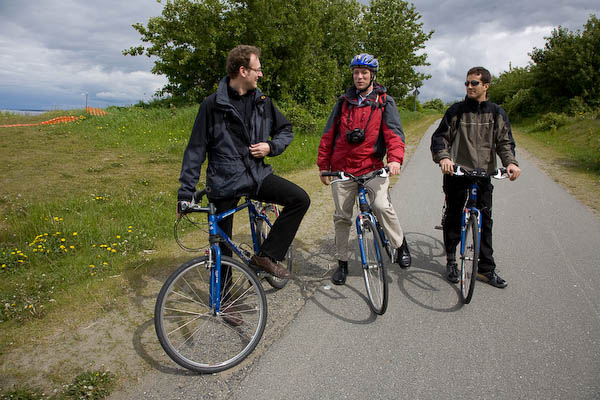
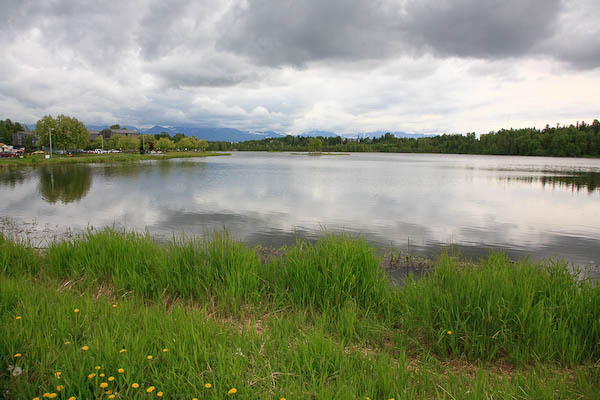
I did a few hikes in the region of Anchorage and it was quite nice. The first day it was raining a bit, but it was still pelasant. Notice the rain drops on the picture.
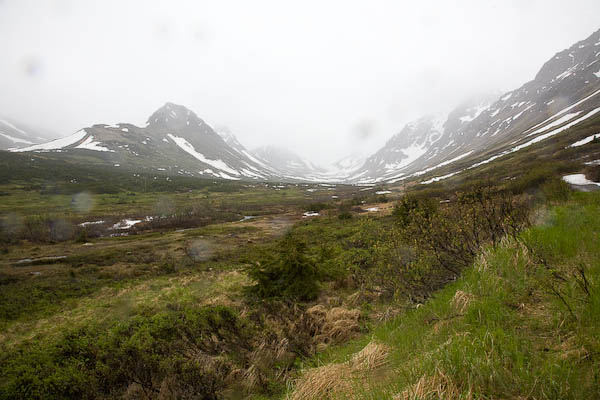
I did a few evening hikes, which were great. Since the sun does not set before 11pm, you can hike late and have magical light. Below is a picture during a hike with Hans, Joel (our guide), Radek and Tim, probably shot around 9pm. All my hikes were organized by xtremely Alaska and i was very pleased by them. My guide Joel was fun and knowledgeable.
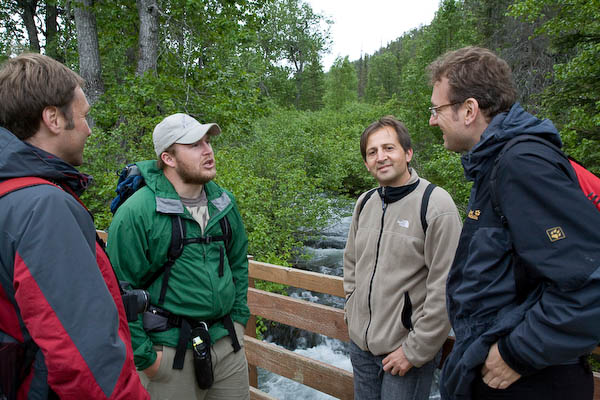
The only problem with hiking late is that restaurants are closed by the time you get to Anchorage. When it's too late, Humpey's is your solution.
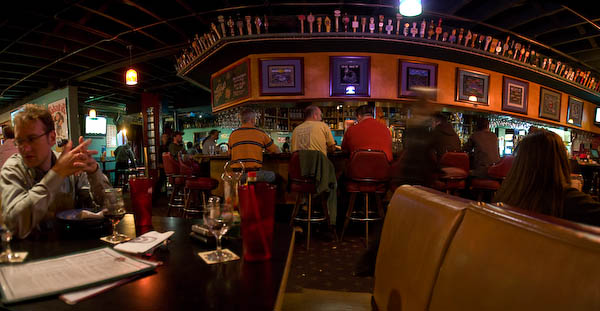
I wasn't too lucky when I did a day cruise in Prince William Sound from Whittier.Yes, the scenery was beautiful and the glacier calving was quite impressive. Even when you are there, it is hard to comprehend the full scale of things. In the photo below, the block of ice that fell was probably as big as the statue of liberty.
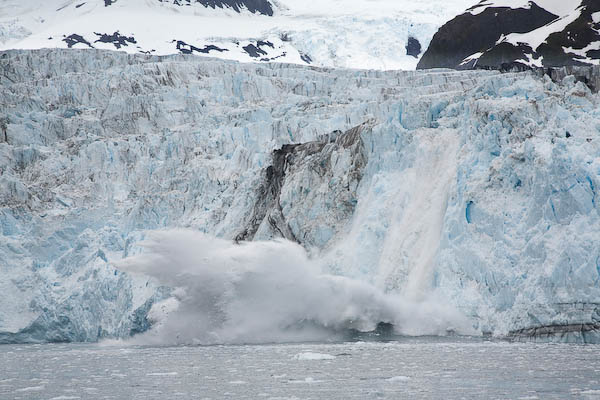
Most people only do a day trip to Seward. This is a big mistake. The area is amazing for sea mammals and scenery.
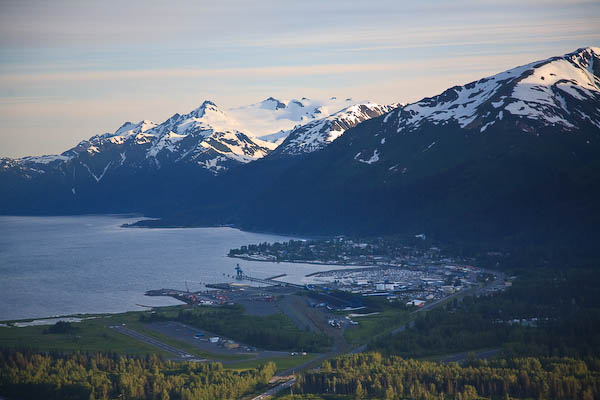
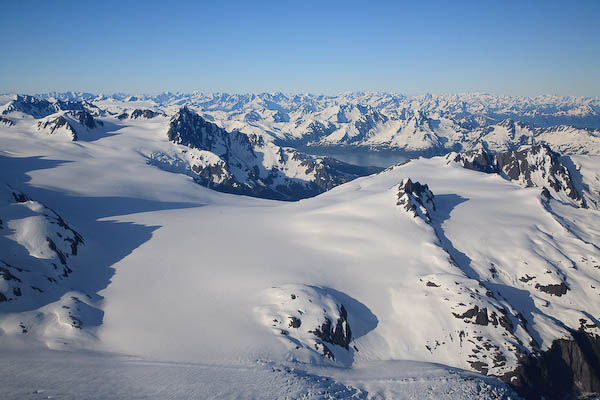
The train ride between Anchorage and Seward is amazing. Don't miss it. The bus/car ride is good as well, but not quite as good. First all, the itineraries are not exactly the same. Furthermore, the train is open between cars, which allows you to take pictures without the glass between you and the landscape.
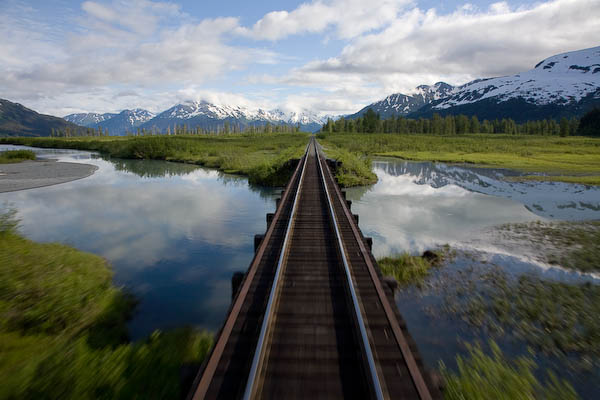
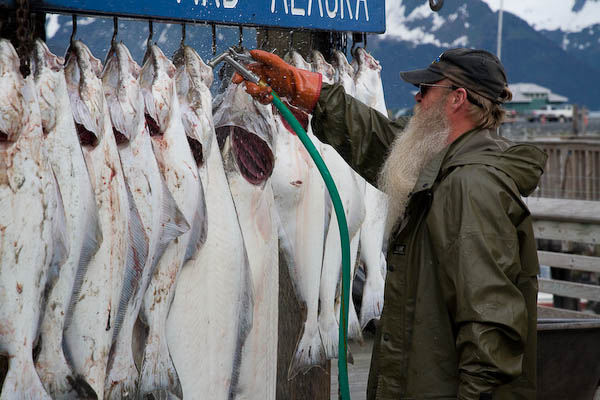
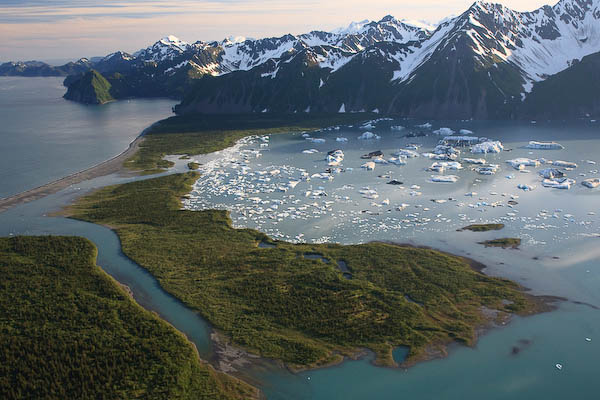

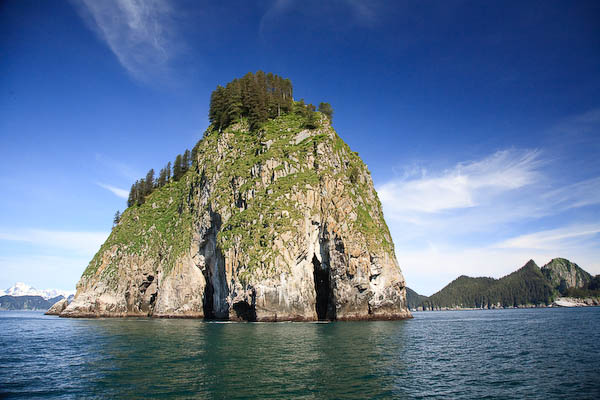
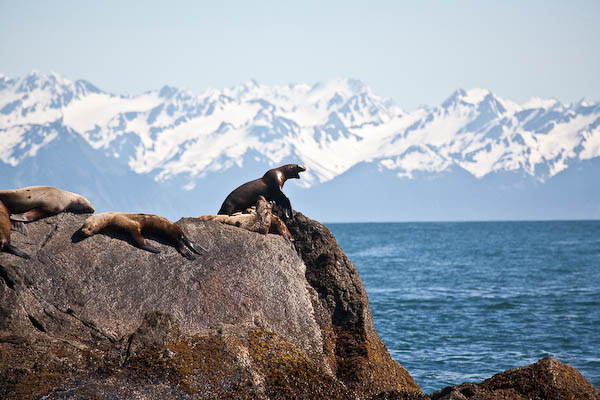
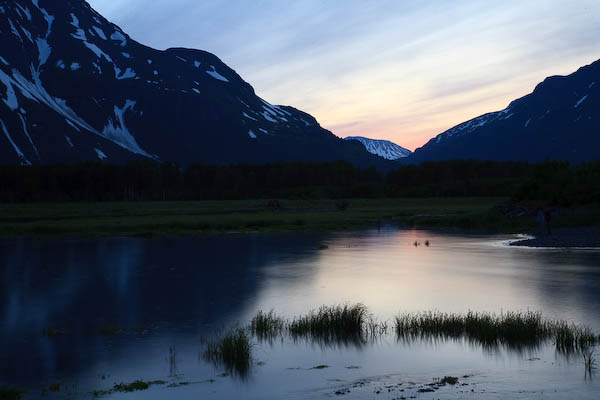
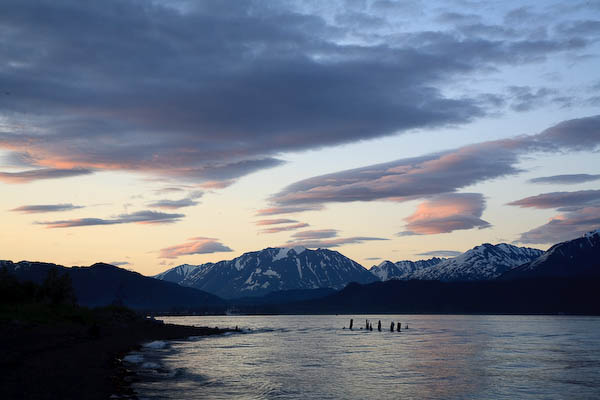
We lived on a boat around the coast of Katmai for 5 days. We were staying on the Coastal Explorer and the Coastal Explorer II with capitain Chuck Kleim and his crew. They were fantastic, knowledgeable and fun.
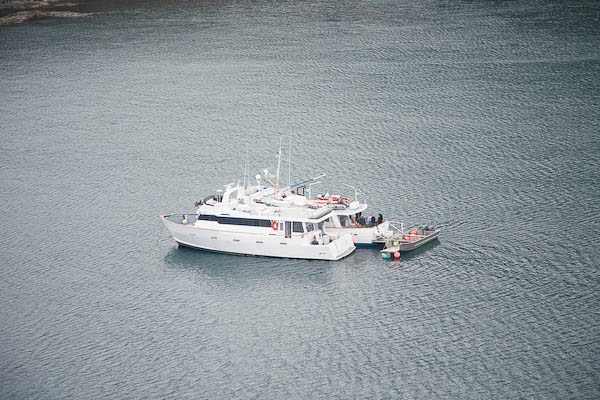
We spent the first half around Geographic harbor where the bears were clamming and we shot from the skiff. Then, when the weather permitted, we move to Halo Bay where we were able to land and shoot the bears grazing in the meadow.
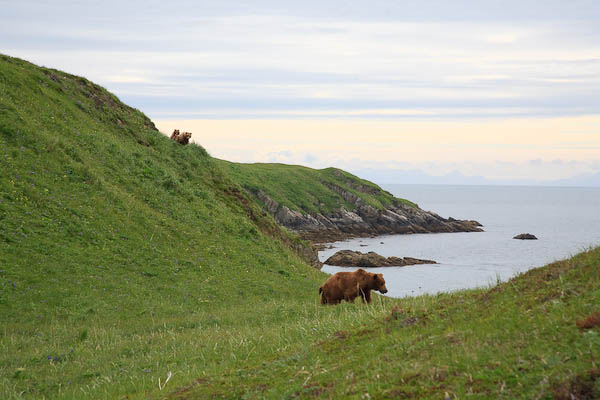
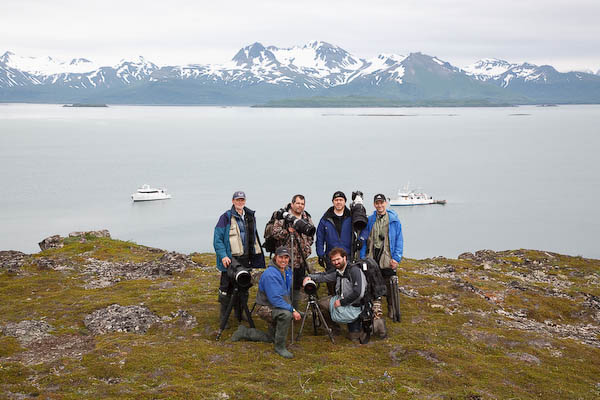
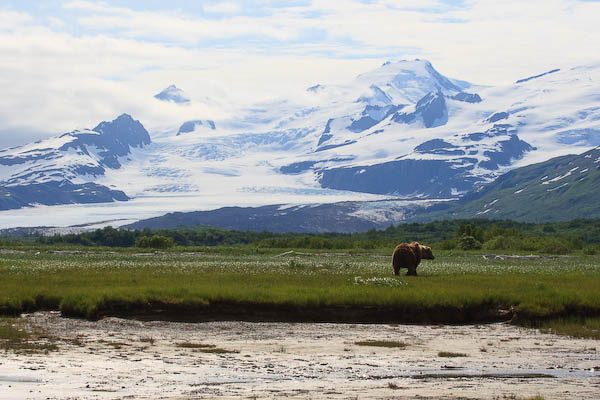
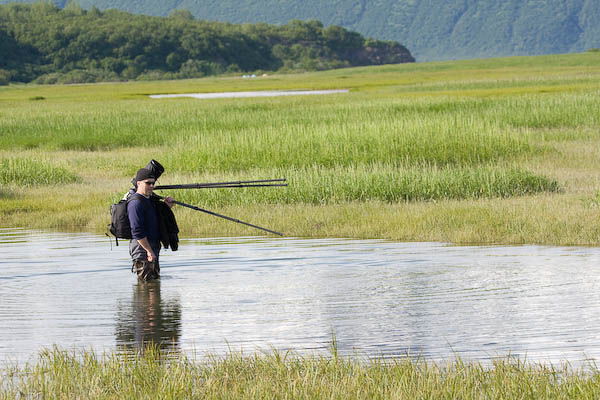
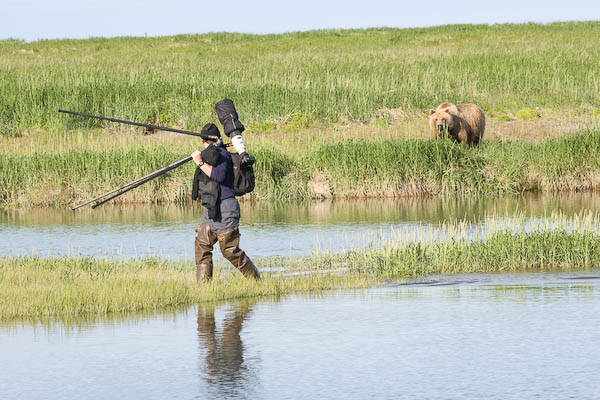
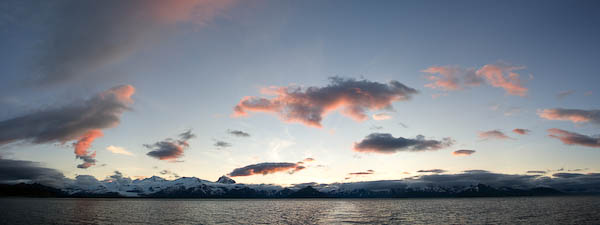
Kodiak seems to be known for its bad weather.
I kayaked there and really enjoyed the scenery. I also managed to tip the kayak over but that's another story...
I then took the ferry from Kodiak to Homer. It's a nice journey with great light, altough I must say I did not manage to take any interesting landscape shot and instead focused on details on the boat.
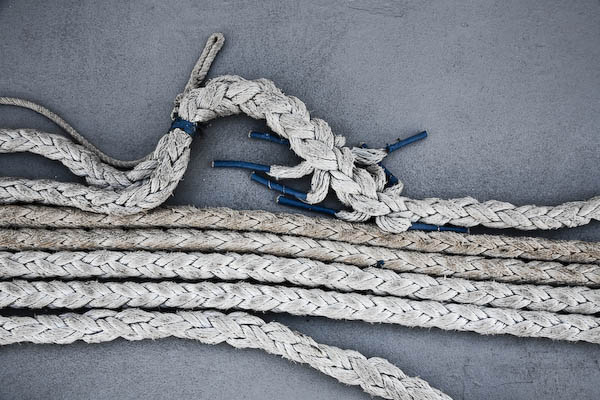
I spent less than 24 hours in Homer and only had time to do a half-day kayak trip.
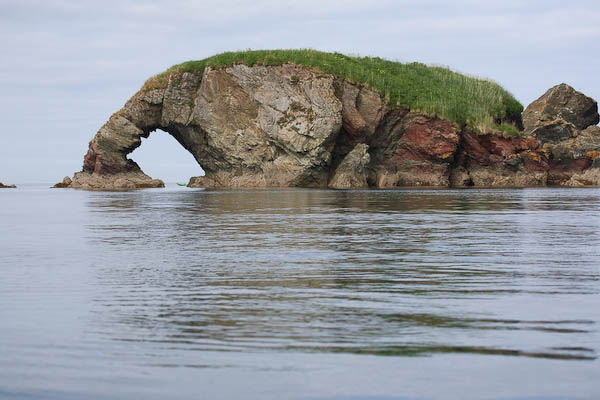
Chuck Keim (capitain of the coastal explorer)